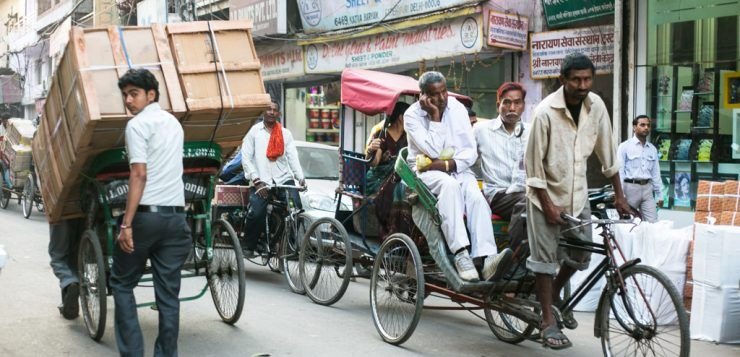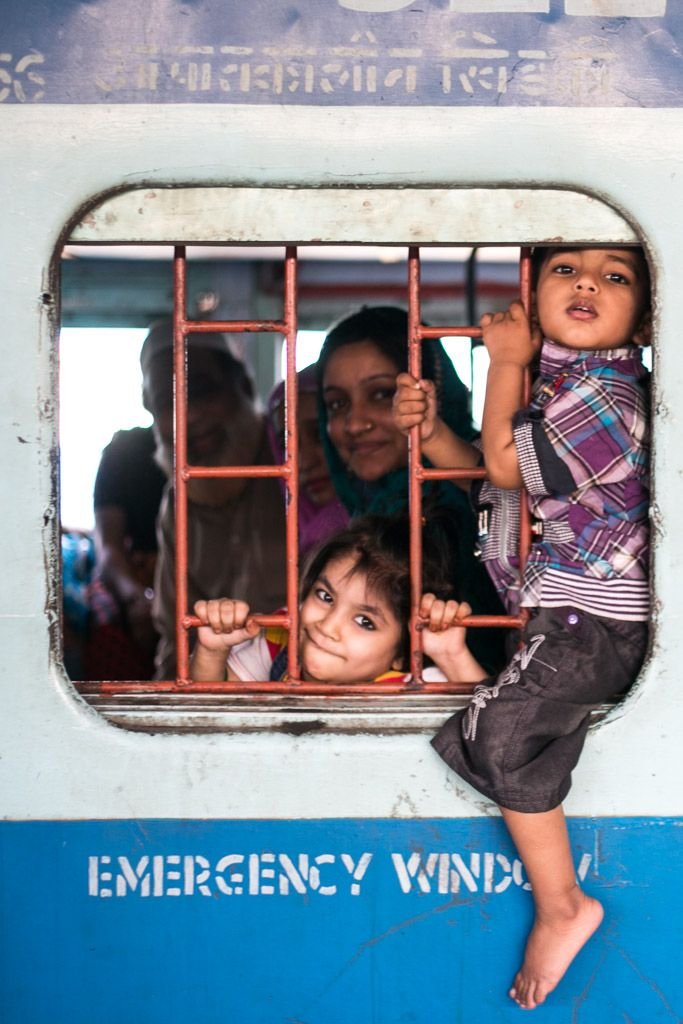This post was last updated on 2024 April 21
India is a challenge in every respect. Getting around the country is just one of many obstacles you must conquer when traveling here. For me, it was a major stress point – particularly when I had 50+ lbs of luggage strapped to my body, and/or was traveling at a very late or very early hour.
Through all my fumbles, I slowly developed a strategy for tackling transportation in India. Had I had it broken down for me beforehand (you know, cliffsnotes-style), it would have saved me SO much grief, and I likely wouldn’t have had so many negative experiences in India (which I’m writing off as extra Adventure Travel points!).
Philosophical Note: But do I really want it all figured out for me before I even have a go at it? Am I not a better traveler (nay, PERSON) for having learned through my struggles?
You know what my answer to that is. HOWEVER – I don’t think it would hurt to go into the game with a few pointers, so here are some things I wish I’d known about traveling by train/rickshaw/bus before arriving in India:
Indian Train Tips:
- If you’re a woman, it is far safer and more comfortable to only travel on AC cars. All the horror stories you hear about women getting groped on trains happen on the non-AC (i.e. second class/general seating) cars, where people are packed like sardines and there’s nowhere for you to go to escape the groping. True, these cars are much cheaper and will give you a more authentic experience traveling with locals – but it’s probably not worth the hassle.
- Book your train tickets AT LEAST a week in advance. There aren’t many AC cars on the trains and they get booked up fast. Failing that, you could get a last-minute ticket through a tourist office – though likely at a higher price.
- If you have a reserved seat on an AC car and aren’t sure of your coach/seat number, each car will have a seating chart posted next to their door which you can check before you board. For overnight trains (i.e. AC two-tier and three-tier cars), seats are not assigned until about 2 hours before departure. A master seating chart will usually be posted on the station platform within those 2 hours, so if you arrive early you can consult the chart before the train gets in. The chart will also be posted on each AC train car once it pulls in to the station.
- The Rajdhani and Shatabdi train lines serve a complementary meal onboard. You’ll also be provided with bottled water and a newspaper on these trains – all included with the price of your ticket. On all other trains, there will inevitably be vendors pacing through the train selling tea and snacks.
Indian Rickshaw Tips:
- Ask hotel staff how much you should pay for rides in each city. This will give you an idea of what is reasonable vs. what is absurd when a rickshaw driver states his initial price.
- Haggle haggle haggle! You have more power in the negotiation if there are other rickshaw drivers around that you could easily go with instead, so don’t be afraid to counter with a super-low price. The driver won’t want to lose you, so he’ll come back with a more reasonable price.
- Never EVER get into a rickshaw without agreeing on a price first.
- Be firm – on both price and destination:
- Sometimes drivers will try to spring a higher price on you at the end of the ride. If they persist, tell them you will pay them the agreed-upon amount or nothing at all. If they STILL demand a higher amount, leave the agreed-upon amount on the seat and walk away.
- In certain cities especially (e.g. Agra), rickshaw drivers are known for trying to take tourists to different hotels, or stopping at shops along the way en route to their destination. If you stay at these hotels or buy from these shops, the driver will make a commission and you will a). Pay more, and b). Have wasted time dealing with the hassle. If they insist your hotel does not exist or is full, demand that they take you there anyway. If they try to take you shopping, refuse the offer and ask to be taken to your destination.
- Always carry lots of small bills and pay with exact change whenever possible. Often drivers will claim not to have any change and it may seem easier to just let them keep the change. But don’t!
- Indian hotels are happy to call to arrange a rickshaw ride for you – and the reason they’re happy is because they’ll about double the rate to make commission. Better to hail the tuk tuk yourself. The only time you’ll need to call ahead is if you’re traveling late at night or early in the morning, when there won’t be many to hail on the street.
Indian Bus Tips:
Local Buses
- It’s not usually obvious which bus is going where, so always ask before boarding. Once you’re on the bus, it’s also not always obvious when you’ve arrived at your desired stop. Again, ask around to ensure you don’t miss it!
- Most local buses don’t require a proper ticket to board, so no need to pay in advance. Someone will come around the bus to collect payment during the trip.
Long Distance Buses
- Long-distance buses have assigned seats. Indian passengers seem to take this very seriously, so don’t stray from the seat noted on your ticket.






